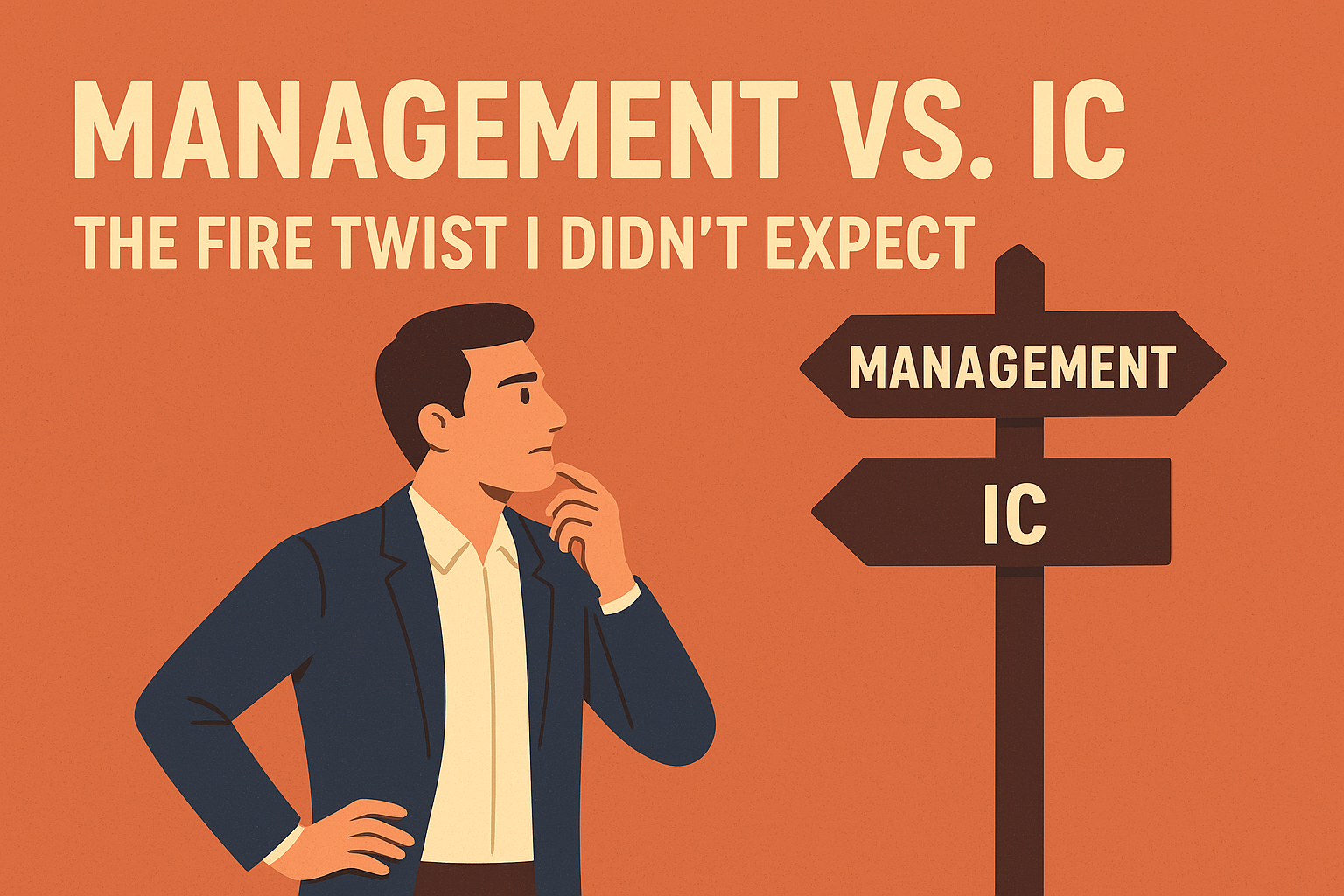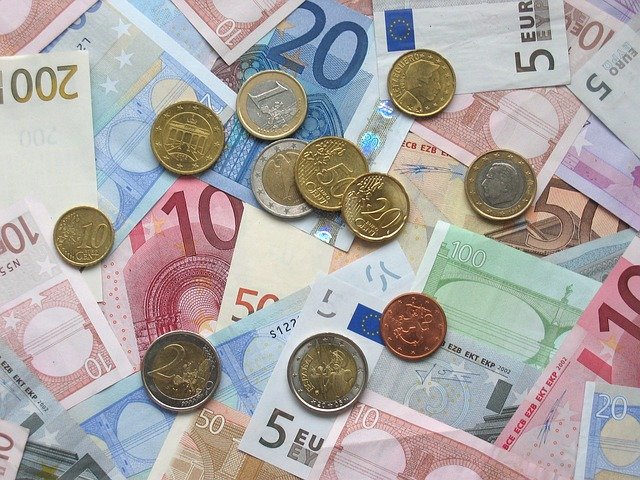What is a good FIRE number? $4,000,000
In the past several years, there's been a movement that's especially popular among millennials called FIRE. It stands for Financial Independence Retire Early. But other than agreeing on what the acronym stands for, there is very little that the FIRE community can completely agree on. And perhaps the most popular debate is what is a good FIRE number?
In this article, I'll talk about the different types of FIRE; what a FIRE number is, what my FIRE is; how to determine your FIRE number, and how I determined mine.

It was important for me to understand my own wants and worries as I plan early retirement. Some folks want to spend a lot of money and travel, some people have poor health and are worried about their medical expenses, and some are tired of the grind and just want to get out as soon as possible. Whatever the case may be, the amount of money needed to live an early retirement lifestyle will vary. This is what people refer to as their "FIRE number." It is their net worth at the time of retirement which will allow them to stay retired, indefinitely.
Since there is a wide spectrum of lifestyles, the FIRE community has bucketed them into 3 main categories: lean FIRE, regular FIRE, and fat FIRE.
(adsbygoogle = window.adsbygoogle || []).push();
Lean FIRE is describing the person that will retire when he/she can live off of less than $40K/year and have a net worth of less than $1M. People who can live a minimal lifestyle will usually choose this option. It can also be easier to execute by moving to a low-cost-of-living (LCOL) area.
Regular FIRE is describing the person that will retire when he/she can live off of $40K - $100K/year and have a net worth of $1M - $2.5M.
Fat FIRE is describing the person that will retire when living off of more than $100K/year and have a net worth of more than $2.5M. These are usually the high income earners, people who have done well in real estate, or people who are near the traditional retirement age and have let the power of compounding beef up their portfolio.
My FIRE number
My FIRE number is $4M in net worth. And I plan to live off of $80,000/year.
It is a combination of a regular FIRE lifestyle with a fat FIRE nestegg. And this is where I deviate from the mainstream FIRE community. In the FIRE community, the rule of thumb for early retirement is to take your expected yearly expenses and multiply that by 25. In other words, if you can live off of 4% of your invested net worth, then you can retire. As much as I want to retire early, I don’t want to be broke when I’m 80 years old, which is what the 4% withdrawal rate may lead me to.
[caption id="" align="alignnone" width="606"] Figure 1. Source: Wade Pfau, www.RetirementResearcher.com [/caption]
Figure 1. Source: Wade Pfau, www.RetirementResearcher.com [/caption]
As seen in Figure 1, if I split my assets into 75% stocks and 25% bonds, then there is a 92% chance that I will have money left over after 40 years. Unfortunately this means that there’s an 8% chance that I’ll be broke in 40 years, which is nuts! I plan to retire at 35 years old but I fully expect to live until I’m 120…I’m seriously depending on those medical breakthroughs.
I need a plan that will not only sustain my net worth, but one that will allow it to continue to grow. Since the 4% withdrawal rate isn't safe, I started to look at what is. 3% looks safe, but 2% looks even safer. And I’ve chosen 2% because I’ve constructed my portfolio such that it will yield above 2% each year. The excess gains will be reinvested to grow the nestegg.
Ultimately, going with a 2% withdrawal rate, I will need to take my yearly estimated expenses ($80K) and multiply that by 50. That’s how I got to a required nestegg of $4M.
Some people are probably thinking that this is way too conservative of a withdrawal rate. But it will let me 1) sleep very well knowing that my family will be taken care of indefinitely and 2) allows me to grow to an incredible amount wealth should I choose to pick up expensive hobbies in the future (e.g. angel investing).

What about taxes? $80K a year in dividend income sounds great, but after taxes it’ll be less than that, won’t it? Fortunately, taxes on dividend income (aka passive income) isn’t nearly as bad as taxes on earned income. Furthermore, as of 2018, married couples will pay 0% for the first $77,200 of qualified dividend income. They also get an additional standard deduction of $24,000 per year. That means the married couple can make up to $101,200 in passive income and legally pay nothing in federal taxes.
But what about state income taxes? Since I plan to move to Texas, this is something I won’t need to worry about. Texas happens to be 1 out of the 7 states that do not have a state income tax. But I am not advocating that you move to a state solely for tax purposes. Texas is a great place to be for many other reasons, but I won’t get into the details in this post.
So if I were to FIRE today, based on the current tax laws, I will be able to keep 100% of my $80K! Pretty cool, right?
6 things to consider when determining your FIRE number
— Ben Franklin
1. Passive income is important, but so is net worth - focus on both. A lot of people think having passive income streams of $100K per year but a net worth of $1M is enough to fat FIRE. While it’s true that they have reached financial independence, it’s not true that this is safe or that they are fat FIRE. Usually when the numbers are like this, their passive income streams may come from a drop-shipping Amazon business or an Etsy store selling t-shirts. These types of “passive” income streams are seasonal and fragile. This is an area where most FIRE folks do not agree on, so I will be writing a blog post describing my thoughts on how to value different income streams in the future. The condensed version is to not take shortcuts in reaching FIRE. Focus on passive income AND net worth--don’t fall into the trap of only having passive income that does not boost your net worth.
2. Time to live - it is different if you're retiring at 35 years old vs 65 years old. Other than the 30 year difference, there are fundamental life obstacles that you need to account for. The 65 year old will get covered for their medical expenses and will most likely not have anymore kids or weddings to pay for. The 35 year old still needs to pay for their private health insurance and raise their kids. I don't have data on this, but I'm willing to bet that the spending patterns of a 35 year old couple is more sporadic than that of a 65 year old couple. For that reason, if you are young, make sure you give yourself a big buffer--anything below a 3% withdrawal rate should be safe. The last thing I want is to be 80 years old and without a dime.
3. Net worth appreciation - just because one retires early does not mean that their total net worth should decline or even stay the same. In fact, it should continue to grow after they’ve retired. This is another reason why I picked a 2% withdrawal rate. The gains above that amount will be reinvested.
4. Cost of living (COL) - one of the first things I asked myself when planning to retire early is where do I want to retire? Cost of living will undoubtedly play a huge factor in computing my FIRE number. For example, to retire early in the Bay Area where an average single family home runs for $2M, daycare runs for $2K per month per kid, and upwards of 13.3% in state taxes, it will be very different from retiring in Houston, TX. I’ve talked to multiple people who live in Texas and have done my research to understand what the associated costs are. This helps me get a realistic view when budgeting for yearly expenses.
(adsbygoogle = window.adsbygoogle || []).push();
5. Tax burden - understand how your passive income streams will be taxed. The tax laws can be wildly different for things you wouldn’t imagine. For example, if someone lives in Tennessee they will not need to pay state taxes on earned income, but they will need to pay taxes on passive income...until the year 2025. Another example is that you will pay earned income taxes on REITs but you pay passive income taxes on rental real estate. These details may seem small, but it’s the difference between being able to FIRE now vs FIRE-ing several years from now. Do not get surprised.
6. Health insurance - when retiring early, health insurance may be your single biggest expense. Do not overlook or be cheap this on line-item. You need it to protect yourself from going bankrupt. There are many plans out there with a max-out-of-pocket expense of $15K/year that cost around $1K/mo. So at a maximum, it will be $27K/year for a family of 5. This number may vary depending on where you live, your age, your current medical conditions, etc. But health insurance should most likely be the first thing you budget for, in order to protect the downside of your assets.
Coming up with your own FIRE number takes a long time, so don’t rush it. If anything, I’d recommend being conservative and working a little longer to secure your family’s future. BuckByBuck has a different, yet thoughtful, approach to computing his FIRE number. Good luck with planning. And if you already know your FIRE number, comment down below!!
UPDATE: You can compute how long it will be until you FIRE using my latest calculator in the tools section.
Featured
[

](/blog/the-post-financial-independence-life-no-one-talks-about)
The Post-Financial Independence Life No One Talks About
[

](/blog/im-building-a-fire-tool-and-i-need-your-input)
I’m Building a FIRE Tool — and I Need Your Input
[

](/blog/management-vs-ic-the-fire-twist-i-didnt-expect)
Management vs IC: The FIRE Twist I Didn’t Expect
2024 Year in Review - Top 6 highlights
[

](/blog/3-things-that-make-fire-hard)
[

](/blog/2023-year-in-review-top-6-highlights)
2023 year in review - top 6 highlights
[

](/blog/5-tips-on-how-to-get-promoted-in-a-big-company)
5 Tips on how to get promoted in a big company
[

](/blog/is-4000000-still-a-good-fire-number)
Is $4,000,000 still a good FIRE number?
[

](/blog/stock-market-is-back-to-near-all-time-highs)
Stock market is back to near all-time highs
[

](/blog/3-ways-i-might-make-money-in-2023)
More Posts

How much did I spend in 2025???

Navigating Your Career in the Age of AI

Comments